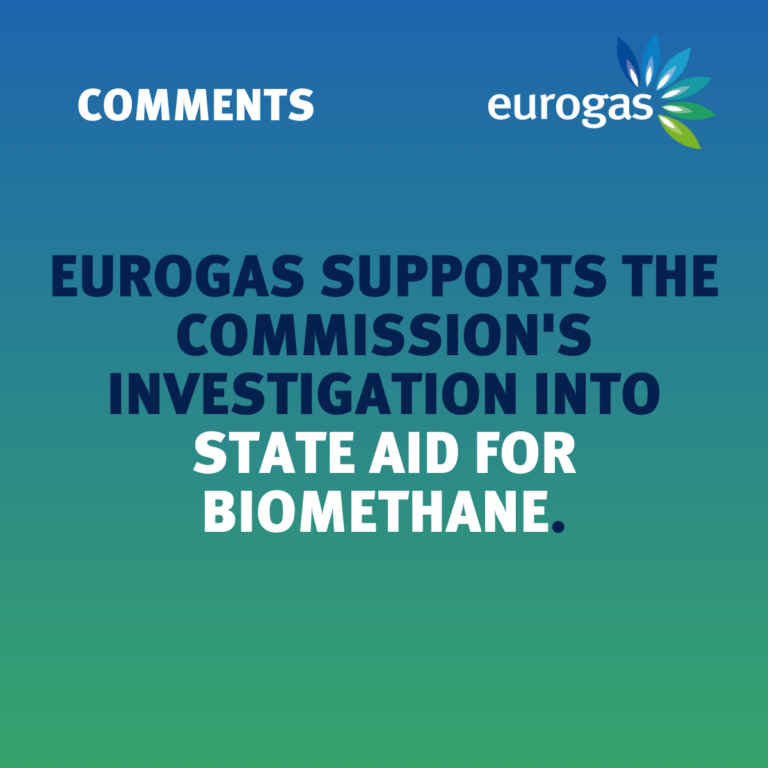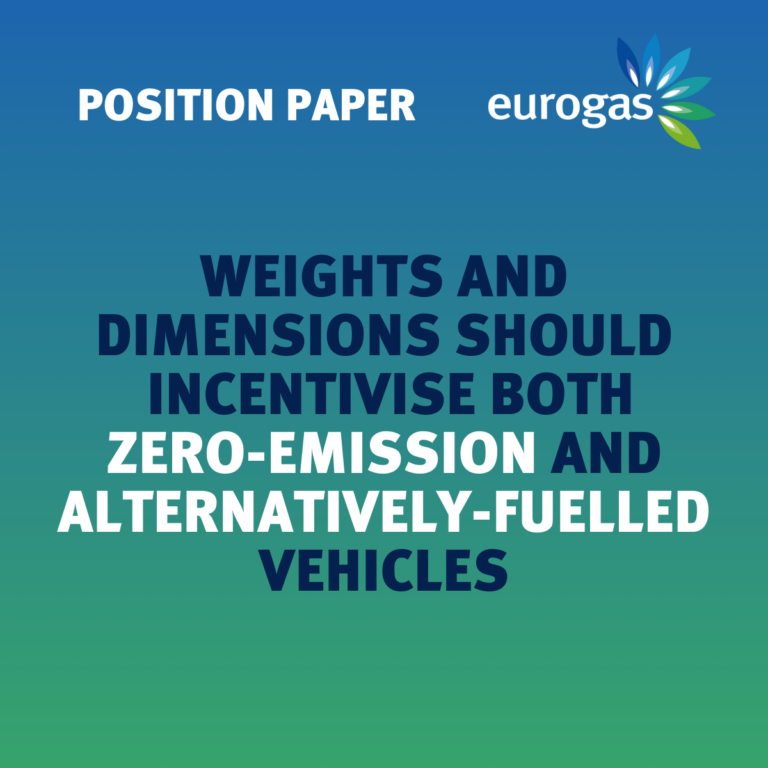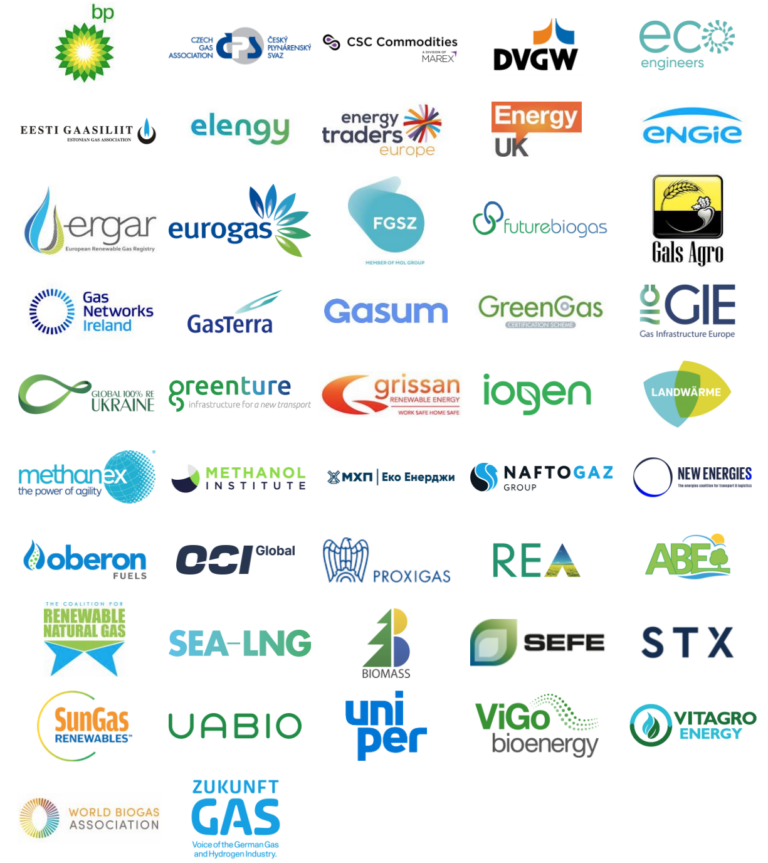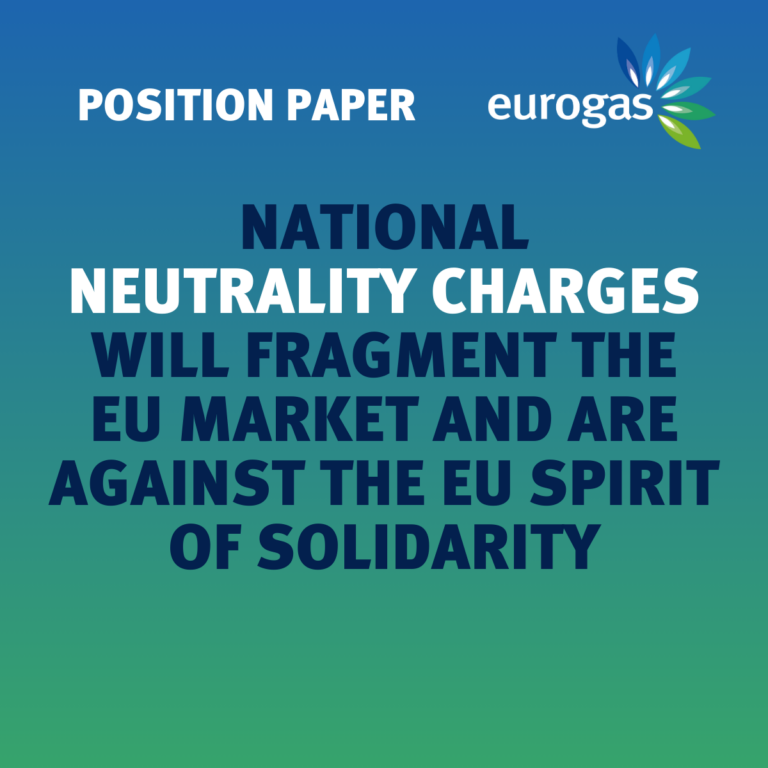Access to short-term liquidity or guarantees provided by public entities and extension of eligible collateral will maintain the functioning of EU energy markets in times of extreme wholesale price development.
Summary
• High and volatile wholesale energy prices are leading to intolerable cash liquidity pressure for energy market participants
• The energy industry calls for time-limited emergency liquidity support to ensure that wholesale energy markets continue to function
• Liquidity and/or guarantees should be provided by governments or financial public law institutions to allow market participants to buffer the impact of clearing houses’ margin calls (via cash payments) on them
• In parallel, we propose an extension of eligible collateral to non-cash collateral such as non-fully backed bank guarantees and EU Emission Allowances (or other accredited instruments). This will help market participants and clearing members to meet the margin calls of the clearing houses
This response has been compiled by EACH, EFET, Eurelectric, Eurogas and Europex and reflects the views of their respective memberships.
Functioning of energy markets and of central clearing
Since the beginning of 2020 the worldwide energy market has been suffering from several severe negative consequences, particularly of the Coronavirus pandemic. The current war in Ukraine has worsened this situation. Energy markets are experiencing price levels and price volatility that have no historical precedent.
Market participants are active in the energy markets to cover their supply and demand and to execute transactions to mitigate the market risk of their commercial activities (hedging). For example, the operator of a gas fired power plant must hedge its commercial risk (market risk) which consists of the constant change in value of the gas procurement and of the produced power. For these purposes, energy market participants trade on wholesale energy markets via bilateral transactions (undertaken over the counter, “OTC”) and/or via centrally cleared, regulated markets.
This paper focuses on the European energy commodities traded on centrally cleared regulated markets (“Exchanges”) in Europe.
It is important to note that the central clearing of trades registered at Exchanges involves several actors and is regulated under the framework of the EU Regulation 648/2012 (EMIR) and its delegated regulations:
– The market participant is responsible for the transactions concluded on Exchanges and thus ultimately also for the credit risk and liquidity management of its trading activity. The market participant is often a client of the clearing member, but can also be a clearing member.
– The clearing member participates directly in the clearing services of a clearing house. It clears its own trades and can also provide clearing services to a client (market participant), in which case the services include managing the client’s positions and guaranteeing the
related financial risk. The clearing member is usually a financial institution (clearing bank), but can also be a non-financial direct clearing member clearing its own trades.
– Commercial bank is the term chosen in this paper to describe a bank that provides banking services to a non-financial market participant that is a direct clearing member, where the commercial bank is not acting as a clearing member for the market participant and may not necessarily be a member of the clearing house.
– The clearing house:
o manages the credit risk and thus mitigates this risk for market participants;
o manages risk via the collection of collateral (margin calls): The clearing house calls for 2 main kinds of margins a) Initial Margin, covering the risk of a default of a market participant and the emergency close-out of its position, and b) Variation Margin, covering the market (price) movements. Variation Margin mirrors the daily profit/loss of underlying positions, while Initial Margin is collateral intended to ensure market stability (herein referred to as “margining”); and
o is therefore an intermediary between buyers and sellers (market participants) of financial instruments. A clearing house guarantees that the transaction will occur and that both parties receive what is due to them. In order to provide such guarantees, the clearing house will at all times hold the necessary collateral required from counterparties, to cover their respective open positions at the related Exchange.
The collection of collateral by clearing houses occurs daily, with requests for collateral being communicated via margin calls. A market participant which receives a margin call must promptly deliver the corresponding collateral to its clearing member who passes this through to the clearing house. A market participant typically has less than a day to provide additional collateral.
As the collateral provided by market participants to clearing members is predominately by means of cash, this can create a significant liquidity management challenge for market participants generally, and for energy corporate firms in particular. In highly volatile market time periods, margin calls may be issued several times within a day to cover risk caused by extreme intraday market price movements.
The higher the level of prices and the greater the volatility in price, the higher will be the size of the collateral collected to cover that risk. The war in Ukraine has led to record level energy prices and volatility. This has pushed the margining requirements to record levels.
The current extreme market conditions lead to liquidity shortages which endanger the functioning of European energy markets
In normal market circumstances, energy market participants do not experience such huge liquidity risks when they hedge their commercial risks and, hence, these firms remain solvent in usual volatile commodity markets. However, market participants, clearing members and clearing houses are currently encountering major challenges in managing the impact of the current geopolitical situation. Massive price movements on European energy Exchange markets have resulted in significantly increased margin requirements for market participants. Since the end of February 2022, an already challenging situation has worsened and more energy market participants are in a position where their ability to source additional liquidity is severely reduced or, in some cases, exhausted. There is consequently a significant risk that some firms might not be able to meet additional margin calls issued by their clearing bank, although they need to continue to hedge their physical assets to avoid exposure to market price risks.
Initial Margin (collateral) requirements have increased by circa 6 times within the last 4-6 months. Market volatility has led to the average amount of Variation Margin required increasing by 10 times from one business day to the next. To illustrate: For example, price levels for front-month Dutch TTF gas have moved from EUR 25 per MWh (2 July 2021) to EUR 75 (7 January 2021) and exceeded EUR 300 in March 2022. An energy producer which hedges large volumes of gas and power via Exchanges had to pay an Initial Margin of EUR 1bn in summer 2021, saw its margin requirements increased to EUR 4bn by October 2021 and ultimately to EUR 6bn in March 2022 – a sixfold increase without any change in the position being hedged. The same company which normally expects daily margin cash flows related to price movements of around EUR 50mn, now faces variation margin requirements of up to EUR 500mn within a business day due to the extreme volatility in prices. The same situation will occur once the energy prices decrease again, because then market participants supplying power and gas to consumers will suffer from the same liquidity squeeze which energy producers currently do.
In addition, some clearing members are asking market participants to deliver significant amounts of additional collateral to cover further increases with a certain buffer in the margin required due to continued market volatility. These additional margin requirements are calculated at the discretion of clearing members and increase pressure on a firm’s liquidity.
These increases in margin requirements raise fundamental questions about the ability of market participants to manage liquidity risks. It is not infeasible to foresee a situation in which generally sound and healthy energy companies, with significant and valuable asset portfolios, are unable to access cash to meet these unprecedented margin requirements. Many of them have reached a point where all options to manage their exposure and/or seek further funding have been exhausted. This risk would be exacerbated if European or other governments imposed further restrictions on Russian gas, oil and coal imports as this would cause further dramatic increases in energy prices and, consequently, in the related margining requirements.
It is not an option for market participants to reduce their hedging positions on Exchanges as this would leave their physical assets unhedged and expose them to market price risks. Market participants cannot conclude corresponding financial hedges on OTC markets due to insufficient market liquidity.
In summary, margin requirements have reached a level where multiple market participants face a risk of not having sufficient cash reserves to meet margin calls and are considered by the clearing bank as a defaulting party.
In that scenario, a clearing member may decide to close-out the position of this defaulting market participant. Depending on the size of the participant’s portfolio, this may also have a knock-on effect on market prices and volatility and therefore create consequential unforeseeable effects (a so-called “domino effect”) on other market participants or, in the worst case, even cause the default of a clearing member. This would have serious consequences on the entirety of European energy markets and their consumers.
Proposals for the injection of liquidity via emergency funding measures
To avoid these negative consequences, European based market participants such as operators of critical energy infrastructure (e.g. power, oil and gas production) and the providers of essential public services (e.g. power and gas supply to consumers) must be enabled to continue to operate and to hedge the market risk of their production and supply activities through centrally cleared transactions executed on European Exchanges.
Hence, there is an urgent need to introduce mechanisms to support liquidity management and to guarantee the stability of the central clearing process. Doing this will, in turn, ensure that energy markets can continue to function properly and guarantee security of supply. This is essential not only for energy markets, but also has implications for the broader real economy.
We propose establishing emergency funding mechanisms to be used in extreme market situations. This funding mechanism would be triggered when an increased level of margining requirement – which is likely to translate to a risk of default of one or several market participants – is reached. Specifically, this is likely to be the case when the concerned exchange participant can no longer fulfil collateral payments to its clearing member. It is important to note that this measure should be applied only during times of extraordinary market stress.
The potential entities providing the emergency liquidity funding could be any highly credit-rated public entity, such as governments, national central banks or any of the public law financial institutions such as the European Central Bank (ECB), European Investment Bank (EIB), European Bank for Reconstruction and Development (EBRD) or Bank of England (hereinafter “public entity”). Collaboration of these institutions with national development banks is also possible.
For this purpose a public entity would either for example (1) provide guarantees to clearing members or (2) provide liquidity directly to the concerned market participants.
(1) We propose that the emergency funding mechanism is provided by the relevant public entity indirectly via the clearing member or via the commercial bank used by a direct clearing participant to enable market participants to effectively hedge their commercial risks and, hence, mitigate market risks as follows:
• As clearing members/commercial banks have limited credit lines or other liquidity facilities they can provide to their clients, we propose that a relevant public entity provides to the clearing member/commercial bank guarantees or other liquidity facilities.
• By providing guarantees or other liquidity facilities from this emergency funding to the clearing member/commercial bank, the clearing member/commercial bank can increase credit lines or other liquidity facilities for the benefit of the clearing client (market participant).
• In this case the clearing member covers the open margin requirements through its own liquidity resources (e.g. loans or credit lines for the benefit of the market participant) and the clearing member is secured via a guarantee or other liquidity facilities of a public entity.
• This will enable the clearing client and clearing member to post the cash collateral to meet the margin calls of the clearing house.
• This liquidity support scheme should be managed by the clearing member in agreement with its concerned clearing client (market participant). Depending on this agreement, the liquidity support scheme would then be initiated and activated by the clearing member.
• In case of market participants being direct clearing members, an alternative route would be direct funding to them.
• The advantage of this procedure it that it would use already established processes and could be easily implemented.
(2) Alternatively, a public entity could set up an emergency funding mechanism to provide liquidity directly to the concerned market participant. This will equally enable the clearing client (market participant) and, hence, the clearing member to post the cash collateral to meet the margin calls of the clearing house. For example, in Germany the public law financial institution, the KfW (Kreditanstalt für den Wiederaufbau) is enabled to grant loans directly to market participants.
Recognise non-fully backed bank guarantees and EU Emission Allowances (or other accredited instruments) as eligible collateral through quick-fix proceedings
In parallel, we recommend urgently a permanent recognition of non-fully backed bank guarantees and EU Emission Allowances (or other accredited carbon allowances) as eligible collateral, by the use of quick-fix proceedings. This will enable the clearing client (market participant) and clearing member to post to some extent these assets as collateral to cover at least an appropriate portion of the margin requirements held by the clearing house. This removes part of the pressure on liquidity management and, therefore, mitigates the risk that some firms might not be able to meet additional margin calls issued by their clearing bank. As this offers a partial solution, we definitely believe that the above-mentioned emergency funding is also still necessary in time of extreme wholesale price development.
Non-fully backed bank guarantees as eligible collateral
Particularly important in the context of the current volatility in energy markets, Article 46 of EMIR allows the use of bank guarantees as collateral by clearing members. However, currently the bank guarantees have to be backed by collateral. Previously, market participants used to trade under an exemption from the EMIR requirement for bank guarantees to be fully backed by collateral which expired in March 2016. The requirement to fully back bank guarantees in reality leads to an almost complete ban on the use of bank guarantees as collateral for market participants. Consequently, the discontinuation of the exemption had a significant adverse effect on the clearing of energy derivative instruments. Although the problem was highlighted to the EU institutions and ESMA, no solution was implemented despite the fact that the risks of using bank guarantees as collateral can be measured, monitored and controlled.
We suggest that authorities consider the possibility of using non-cash collateral such as non-fully backed bank guarantees as collateral to the benefit of market participants. Several clearing houses in Europe historically allowed market participants to use bank guarantees as collateral, especially energy clearing houses as clearing members in those markets have limited amount of cash or other collateral assets compared to financial participants. This is particularly the case for the clearing houses in the following jurisdictions: Denmark, Finland, Hungary, Poland, Portugal, Spain, Sweden and Norway.
Therefore, in order for EU clearing houses to be able to fully provide their range of services, we would call for a swift regulatory intervention to maintain well-functioning markets, especially in the energy clearing sector, and propose allowing non-cash collateral. In the current context of energy prices increases in particular, it is important that markets function efficiently and this includes in particular ensuring there are no undue barriers to trading in cleared markets in particular in case there was an absence of liquidity in the bilateral OTC market.
In particular, we would like to emphasize the benefits of using bank guarantees:
Highly liquid products
On first demand, bank guarantees create a non-accessorial, abstract obligation to the beneficiary, putting the beneficiary in a strong legal position (“pay first, sue later”). The guarantor remains liable even if the underlying obligation is extinguished, it must pay immediately and cannot object. The characteristics of bank guarantees as unconditional, irrevocable and on first demand, make them “highly liquid”. For these continuing guarantees the guarantor assumes liability for any past, present and future obligations owed by a debtor to a lender or creditor. Even where the amount owing has been completely paid, the guarantor can still be liable under that line of credit if there is a subsequent indebtedness.
Limited market risk
The market risk of bank guarantees is limited in terms of volatility. In times of market stress, clearing members might find it difficult to increase the bank guarantee limits. This is mitigated by concentration limits on posted collateral per clearing member, i.e. limited percentage of its total collateral issued by one issuer.
Limited credit risk
The credit risk is managed by only accepting guarantees issued by investment-grade rated banks with a certain minimum rating, external rating and evaluation using an internal score card. A deterioration of a bank guarantee issuer’s credit worthiness will have implications on the applied haircuts and/or eligibility of the bank guarantees issued by the relevant bank. The lower the credit rating, the higher the haircut.
Low correlation between financial and energy sector
We insist that potential risks can be measured and controlled, and that they do not lead to the motivation that bank guarantees must be fully backed. The clearing house is exposed only to a loss in case both the member and the issuing bank are defaulting simultaneously. The correlation of defaults in the energy sector and the financial sector has been historically low. Nevertheless, issuers may be added to the credit watchlist for extra monitoring. If an issuer defaults, the member is required to immediately find another issuer or collateral.
Adding Emission Allowances as eligible collateral
We see benefit in adding EU Emission Allowances or other accredited carbon allowances (“Emission Allowances”) to the definition of eligible collateral. We observe a growing interest from market participants in using Emission Allowances as a financial collateral for the purpose of central clearing. The main reason for this is that these markets have seen a steady increase in liquidity and could be considered as relatively mature by now. Accepting Emission Allowances as collateral would allow market participants to make use of their allowances more productively and economically. This could lead to substantial cost savings for market participants, especially for compliance users, by avoiding the costs of raising other collateral and by freeing up capital for investments into their main business.
However, today, possibilities for clearing houses to accept Emission Allowances are limited mainly for legal reasons. Besides Emission Allowances not yet being added to the financial instrument’s definition by the Financial Collateral Directive, we believe an additional obstacle is the limitation of collateral that clearing houses are allowed to accept. According to Article 46 (1) EMIR, a clearing house shall only accept highly liquid collateral with minimal credit and market risk to cover its initial and ongoing exposure to its clearing members. Without the explicit recognition of Emission Allowances as an eligible type of collateral, we believe that the market participants cannot efficiently use their positions in Emission Allowances as collateral for central clearing. We believe that their integration as eligible collateral could have a substantial effect regarding their acceptance as collateral in the overall market, in particular by clearing members and clearing houses.
We agree to apply an appropriate haircut to the value of Emission Allowances to establish the eligible collateral value.
***
About EACH
The European Association of CCP Clearing Houses (EACH) represents the interests of Central Counterparties Clearing Houses (CCPs) in Europe since 1992. EACH currently has 18 members from 14 different European countries and is registered in the European Union Transparency Register with the number 36897011311-96. EACH works with public authorities and industry stakeholders in order to offer the consolidated opinion of our membership in regulatory discussions and consultations as well as help member CCPs to agree appropriate standards and guidelines for the industry.
About EFET
The European Federation of Energy Traders (EFET) promotes and facilitates European energy trading in open, transparent and liquid wholesale markets, unhindered by national borders or other undue obstacles. We build trust in power and gas markets across Europe, so that they may underpin a sustainable and secure energy supply and enable the transition to a carbon neutral economy. EFET currently represents more than 100 energy trading companies, active in over 27 European countries.
About Eurelectric
Eurelectric is the federation of European electric industry. We speak for more than 3500 European utilities covering the entire industry from electricity generation and markets to distribution networks and customer issues.
About Eurogas
Eurogas represents the interests of the European gas industry. We represent the entire gas value chain, from the gas wholesale market through distribution to retail. We also represent companies supplying end-user equipment and technology solutions. Our membership is composed of over 64 companies and associations in 24 countries.
About Europex
Europex is a not-for-profit association of European energy exchanges with 30 members. It represents the interests of exchange-based wholesale electricity, gas and environmental markets, focuses on developments of the European regulatory framework for wholesale energy trading and provides a discussion platform at European level.
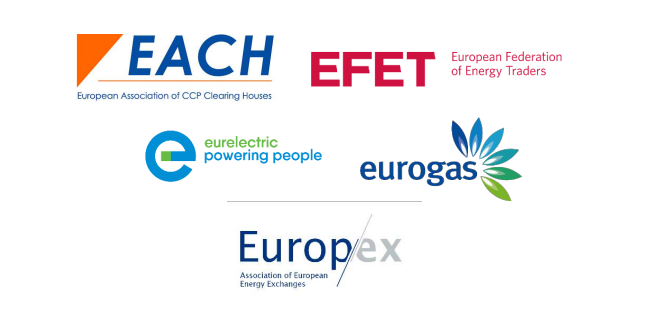
Download the Pdf HERE.

